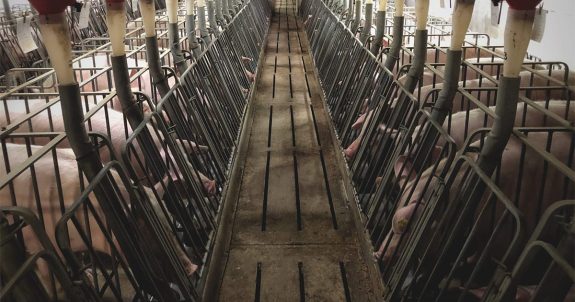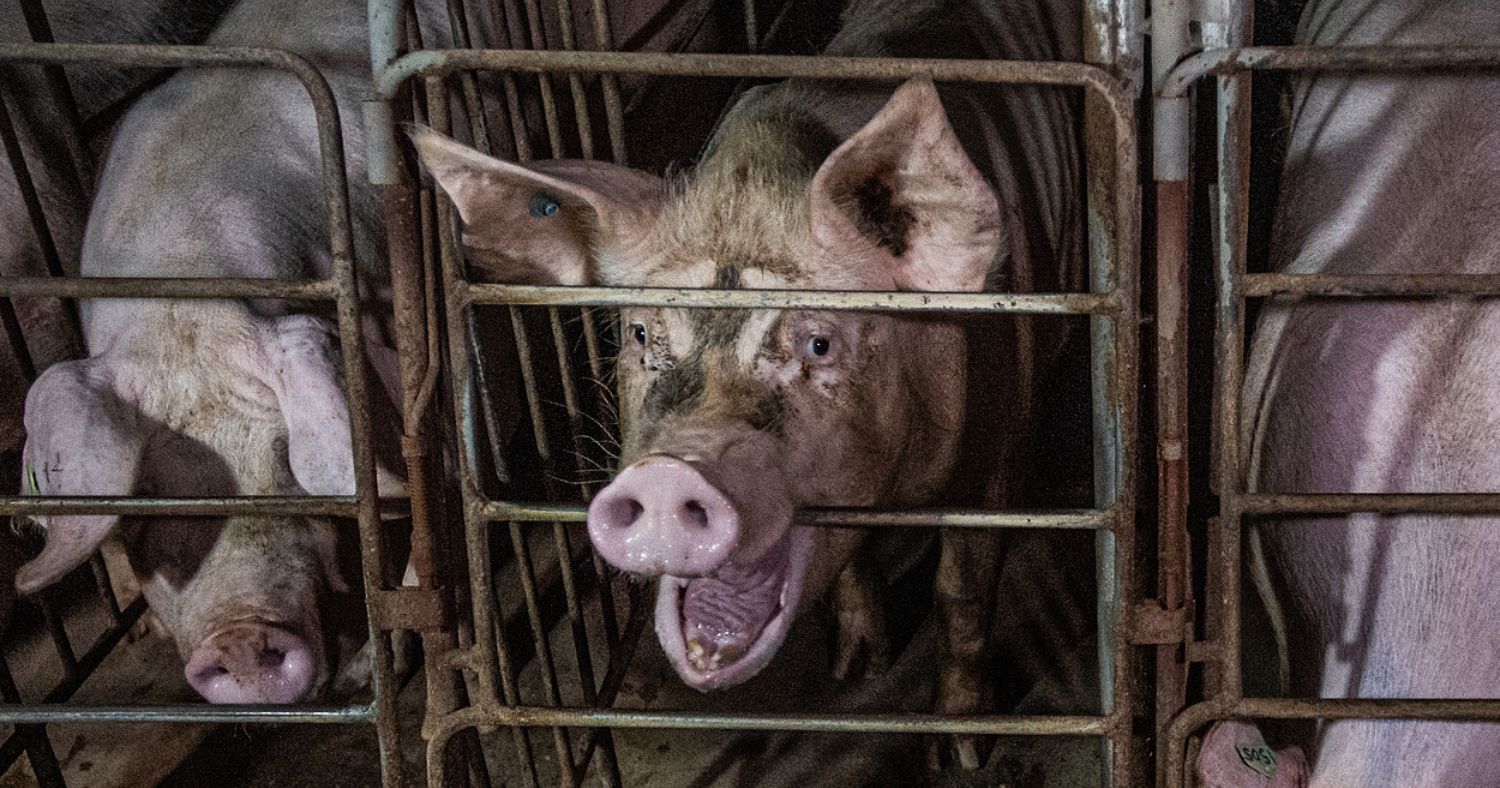The Canadian meat industry slaughtered more than 812 million land animals for food in 2020, according to government slaughter statistics analyzed by Animal Justice. This appears to be a drop from the number of animals slaughtered in 2019, but there’s no reason to celebrate—this likely reflects the effects of the COVID-19 pandemic, rather than a true reduction in factory farming in Canada.
Insert graphic, as we’ve done with past years: Down from 834 million in 2019 and 819 million in 2018, but up from 800 million in 2017, 771 million in 2016, and 750 million in 2015.
Since Animal Justice began compiling these figures in 2015, the number of animals slaughtered for food has increased every year until 2020.

But in the early days of the pandemic, supply chain disruptions led farmers to cull mass numbers of chickens on farms. Farmed animals—especially chickens—are raised on a just-in-time model; when they are large enough, they are immediately sent off to slaughter and a new group of baby animals is brought in to repeat the process. With pandemic-related staff shortages at slaughterhouses, and less demand for some types of meat, many farmers chose to kill off entire flocks of birds or barns of pigs for economic convenience, instead of shipping them to slaughter.
The trend toward slaughtering more animals is almost entirely due to people eating more chicken meat. Per capita demand for most types of meat has either declined or remained constant over the past 30 years. For instance, the amount of pig and cow meat consumed by an average person (i.e., pork, bacon, and beef) has decreased by about a third. But chicken meat consumption has more than doubled. Chickens are much smaller than cows or pigs, so more of them must be killed to sell the same amount of meat. Population growth also plays a role in the increase in chickens being slaughtered.
Here are the numbers broken down by sector:
Meat chickens: 737,755,701
Egg-laying hens and breeding chickens: 25,571,371
Turkeys: 18,695,003
Ducks and geese: 6,273,677
Pigs: 22,558,531
Adult cows (dairy and meat): 3,240,463
Calves: 212,393
Sheep and lambs: 567,389
Deer: 1,295
Elk: 2,821
Wild boars: 4,487
Bison: 7,860
Rabbits: 445,850
Goats: 86,871
TOTAL: 812,423,712
These numbers help paint a picture, but they still leave out a lot. At least 30,405,000 chicks were killed at hatcheries in 2020—most of them male chicks who were ground up alive because they don’t produce eggs and are worthless to egg farmers. An additional 1,412,000 turkey chicks were killed in turkey hatcheries.
Horses are also missing from this picture. The government currently refuses to disclose how many horses are slaughtered in Canada. As a result, likely tens of thousands of horses are missing from Animal Justice’s analysis. (In 2016, the last year for which data is available, over 54,000 horses were slaughtered.)
Other animals killed by the meat, dairy, and egg industries outside of slaughterhouses are also not accounted for in this analysis, including the millions of animals who die prematurely of illnesses and injuries on farms or during transport, and the millions of animals who are so sick and injured that they are condemned when they arrive at slaughter. This analysis also doesn’t account for the animals who were killed for convenience on farms due to pandemic-related supply chain disruptions, instead of being sent to slaughter—these deaths may never be reported to the government.
These figures also don’t include aquatic animals like fishes, lobsters, crabs, and clams whose individual deaths aren’t tracked—their lives are measured in tonnes. However, we do know that in 2020, Canada killed 22,021 tonnes of freshwater fishes, 362,397 tonnes of ocean finned fishes, and 344,552 tonnes of shellfishes. A further 140,775 tonnes of farmed finned fishes and 30,029 tonnes of farmed shellfishes, accounting for millions of individual lives, were caught and killed.



